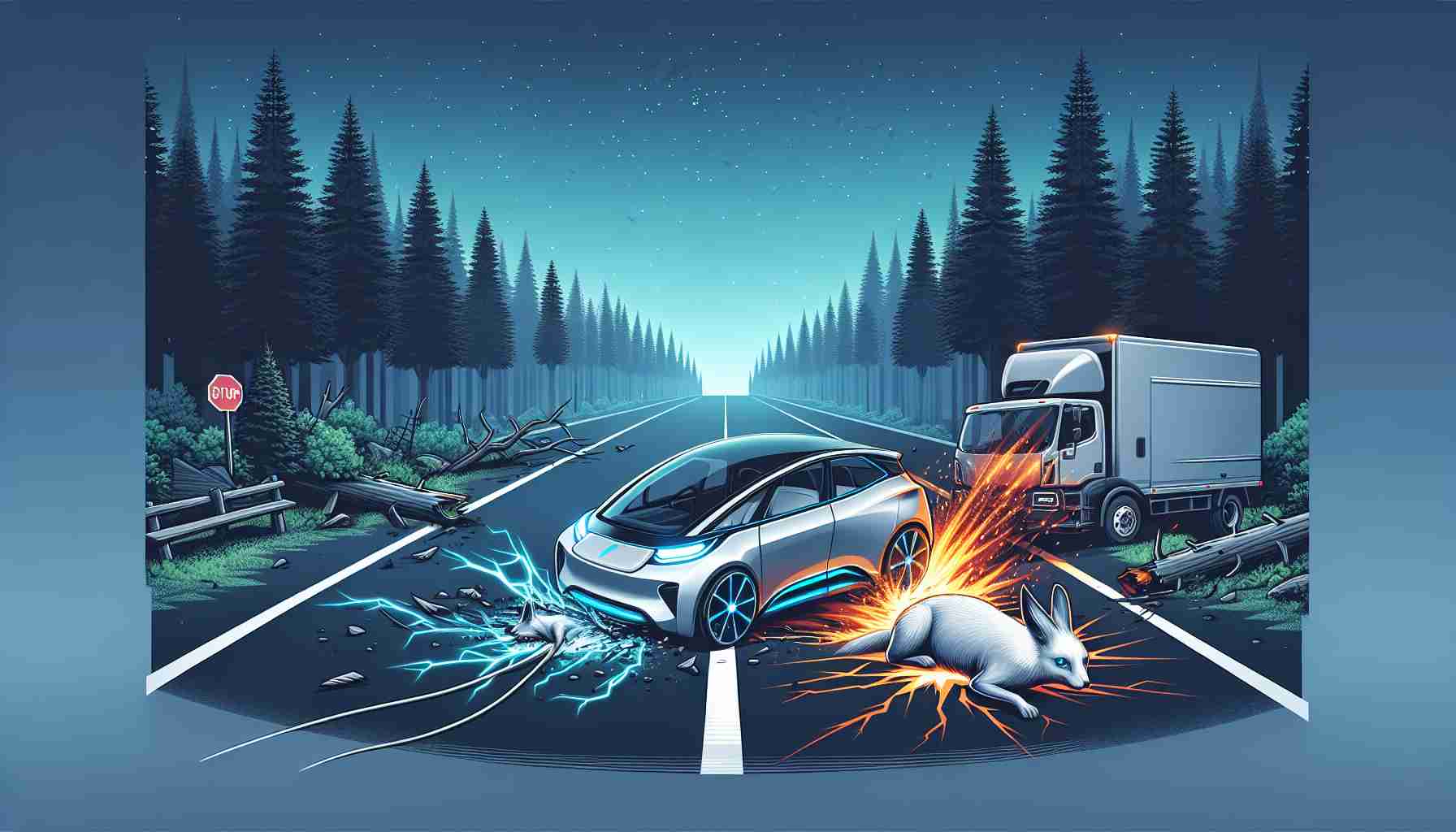An unusual incident involving an electric vehicle occurred on a rural road when it collided with a wild animal, resulting in a dramatic fire.
The unique event unfolded on a dark evening along a remote stretch of road in a peaceful county. The electric car, which had been quietly navigating the route, found itself in a sudden and unexpected encounter with wildlife. The impact of the collision ignited a fiery blaze that quickly engulfed the vehicle, creating a scene that captured the attention of bystanders and emergency responders alike.
Despite the intensity of the fire and the dramatic nature of the accident, the occupants of the electric car emerged unscathed, avoiding any injuries. The authorities swiftly responded to the scene, working to contain the fire and clear the roadway for safety reasons.
The aftermath of the incident left a temporary closure of the road in place, as cleanup efforts commenced to address the aftermath of the collision. The event serves as a stark reminder of the unpredictable nature of encounters between vehicles and wildlife in rural areas, highlighting the importance of remaining vigilant while traveling through natural landscapes.
Electric Car Safety Concerns: Exploring Key Questions and Challenges
An electric car igniting in a fiery collision with wildlife has raised several important questions and highlighted key challenges in the realm of road safety and environmental conservation. Let’s delve into some crucial aspects of this incident:
1. Why do electric cars pose unique risks in collisions with wildlife?
Electric cars, known for their quiet operation, may catch animals off guard, leading to unexpected encounters on the road. The lack of engine noise in electric vehicles reduces the chances of animals hearing approaching vehicles, potentially increasing the risk of collisions.
2. How do authorities handle fires involving electric vehicles and wildlife?
Responding to fires in electric cars presents challenges due to the specialized nature of electric vehicle batteries. Firefighters need to employ specific protocols and techniques to safely extinguish lithium-ion battery fires to prevent reignition and ensure the safety of responders and the environment.
3. What are the advantages and disadvantages of electric vehicles in wildlife collisions?
Advantages:
– Reduced emissions: Electric cars contribute to lower greenhouse gas emissions, benefiting wildlife and the environment.
– Quiet operation: While it can be a disadvantage in wildlife collisions, the quietness of electric cars is praised for reducing noise pollution in natural habitats.
– Safety features: Many electric vehicles are equipped with advanced safety systems that can mitigate collision impacts and protect occupants.
Disadvantages:
– Lack of noise: As seen in this incident, the quiet operation of electric vehicles can pose risks in wildlife-rich areas where animals may not hear approaching cars.
– Battery fires: Lithium-ion battery fires in electric vehicles can be challenging to extinguish, requiring specialized training and resources.
– Cost of repair: Repairing electric cars damaged in collisions, especially fire-related incidents, can be more expensive than conventional vehicles due to the complexity of electric components.
In light of these considerations, it’s crucial for drivers of electric cars to be mindful of wildlife presence on the roads and for authorities to be equipped to address emergencies involving electric vehicles in diverse scenarios.
For more information on electric vehicle safety and wildlife encounters, visit Example Domain.
